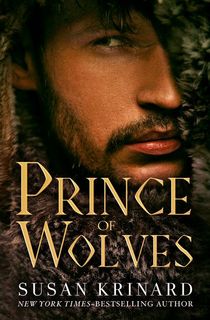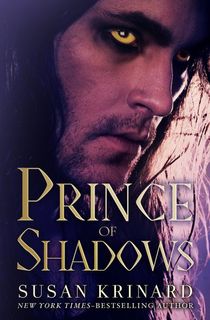For me, growing up, wolves always held a powerful fascination. I loved dogs, and to me, wolves were the ultimate canines, powerful and free and noble, beyond the control of humans.
I admired their commitment to family, their intelligence, their grace and strength, their obvious beauty. It was unconceivable to me that they could be considered vermin to be eliminated or bloodthirsty killers, but I knew that was often the case.
I’d read it all before: wolves were slavering, vicious predators, capable of tearing a man in half, stealing babies, and attacking humans for no reason but sheer, inborn evil. There was not a single redeeming feature in a wolf: he was to be hunted down and slaughtered, the courage of the hunter forever displayed in his stripped coat.

Many people’s disdain for wolves had, of course, a basis in fact. Primitive man saw the wolf as a direct competitor for resources. Like people, they formed groups and worked together. It would not have been unusual for wolves to drive human hunters away from their kill.
Later, “civilized” men added more evils to the list of wolves' sins. They were clearly defined as part of the wild world, the world humans had gradually left behind in favor of structured law and religion. The dividing line was clear. Demonic eyes shone out of the darkness of the unknown; tame domestic animals were attacked and killed, robbing humans of their livelihood. And wolves, unlike so many other animals, could neither be tamed nor controlled.
Only much later, in the 20th century, as people destroyed the habitat on which the wolves depended, did men and women begin to see the value in the part the wolf played in nature, its intrinsic value, and how ruthless hunting for sport was decimating its numbers.
But the damage had been done. Many still looked upon wolves as vermin, and from the legends of the wolf had sprung tales of creatures even more loathsome: the werewolf.
In the 17th century, the legends of men becoming ravenous wolves may have taken its cue from “madmen” and serial killers who slaughtered indiscriminately. These men were said to have sworn allegiance to the devil and possessed an ointment that helped them change into wolves. They were later hanged for the deaths of multiple children.
Many people believed that men became werewolves due to a curse, possessing a special amulet made of wolf hide, or being attacked by a werewolf and surviving.
Others believed the transformation was the work of a full moon, and there is some evidence that more crimes are committed at the time of the full moon. The belief that werewolves were real could have been generated by any number of medical conditions or use of substances that caused a human being to appear to have “wolflike” qualities.
RELATED: Petrus Gonsalvus, the Real-Life Inspiration Behind Beauty and the Beast
Today — though there are some who still believe in literal werewolves—most people are aware of the legend through movies such as the The Wolf Man (1941) starring Lon Chaney, where the full moon is to blame for turning a man into a bizarre blend of man and wolf.
This type of “mutant” werewolf was seen more often in popular culture as the years went by, as in An American Werewolf in London (1981) and The Howling (1981). Other movies took a more humorous and less bloodthirsty turn, as in Wolf (1984) and Teen Wolf (1985).

Still from 1985's Teen Wolf.
Photo Credit: Atlantic Releasing CorporationHowever, though some films and books in SF/fantasy literature experimented with the “non-cursed,” “non-bloodthirsty” image of the werewolf, the tale remained a common thread in human consciousness. And it all came back to the wolf: an untamable, unpredictable raider of livestock and possible killer of humans.
And real wolves continued to be hunted: from helicopters in Alaska, with traps, with guns. And I grew increasingly angry at the slaughter of these animals as federal and state laws failed to protect them.
That was why, when I set out to write my first romance novels, I gave careful thought to what idea I wanted to follow. I knew I’d be writing “paranormal romance,” though as yet it had not become the distinct genre it is today. Having been a science fiction and fantasy reader all my life, paranormal was an easy choice.
I had always loved the idea of shapeshifting. I loved wolves. And though some romantic werewolves had been written, all I could find involved the “cursed” werewolf who had to fight his evil nature to win the heroine.
I wanted to start with a new view of wolves ... and werewolves. I didn’t want to erase the “wildness” and unpredictability of the animals: I wanted to show the admirable side of wolves, their devotion to their own families and loved ones. And the loyalty as well as the wildness of wolves seemed to make for an ideal hero.
Determined to “set the record straight,” I wrote Prince of Wolves, the first of many werewolf romances at a time when wolf shapeshifting was often still considered a darkness to be overcome.
Although he was what was then known as an “alpha male,” my hero, Luc, also possessed the gentleness, as well as the fierce loyalty to his mate and family, that I admired so much in the animal he could become.
I continued to write about shapeshifters, mostly wolves, but occasionally the odd unicorn or two. Now that shifter romances are so popular, I can be glad that I was among the first romance authors to present wolves as what they truly are: admirable, intelligent and beautiful.
Meet Susan Krinard's wolves today!
This post is sponsored by Open Road Media. Thank you for supporting our partners, who make it possible for The Portalist to celebrate the sci-fi and fantasy stories you love.
Featured photo: Thomas Bonometti / Unsplash



